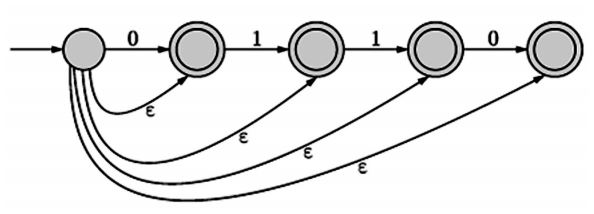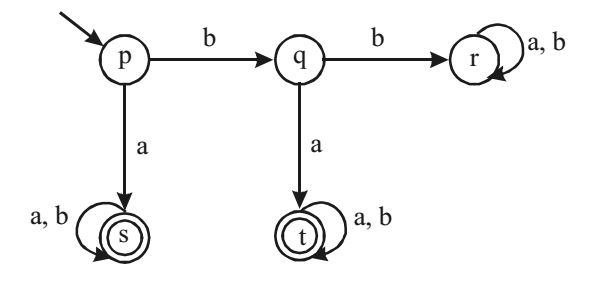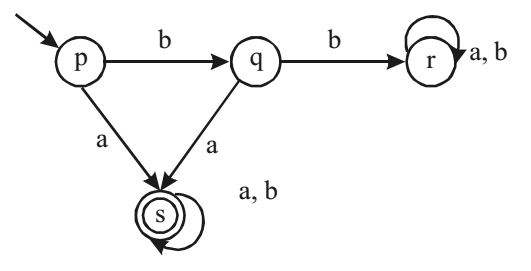Theory of computation miscellaneous
- S → aSa |bSb| a | b; The language generated by the above grammar over the alphabet {a, b} is the set of
-
View Hint View Answer Discuss in Forum
Given grammar S → aSabSbab. The strings generated through this grammar is definitely palindromes,but not all it can only generate palindromes of odd length only so (A) & (D) are false, (B) is correct. Also it can generate palindromes which start and end with same symbol, but not all strings eg. aabababba .
Correct Option: B
Given grammar S → aSabSbab. The strings generated through this grammar is definitely palindromes,but not all it can only generate palindromes of odd length only so (A) & (D) are false, (B) is correct. Also it can generate palindromes which start and end with same symbol, but not all strings eg. aabababba .
- Let L = {W ∈ (0, 1) * | W has even number of 1s}, i.e., L is the set of all bit strings with even number of 1's. Which one of the regular expressions below represents L?
-
View Hint View Answer Discuss in Forum
It is given that L is the set of all bit strings with even number of 1's so the regular expression should exhibit the same. Now, the min string should be e and the string should be e, 0, 11, 101,... The string obtained from such expression is 0* (10* 10 *)*
Correct Option: B
It is given that L is the set of all bit strings with even number of 1's so the regular expression should exhibit the same. Now, the min string should be e and the string should be e, 0, 11, 101,... The string obtained from such expression is 0* (10* 10 *)*
- Let W be any string of length n in {0, 1}*. Let L be the set of all sub-strings of W. What is the minimum number of states in a non-deterministic finite automata that accept L?
-
View Hint View Answer Discuss in Forum
L is the set of all substrings of w where w! {0,1}) Any string in L would have length 0 to n, with any no. of 1's and 0's The NDFA

Here n = 4
So to accept all the substrings the no. of states required are n + 1 = 4 + 1 = 5
Hence (c) is correct option.Correct Option: C
L is the set of all substrings of w where w! {0,1}) Any string in L would have length 0 to n, with any no. of 1's and 0's The NDFA

Here n = 4
So to accept all the substrings the no. of states required are n + 1 = 4 + 1 = 5
Hence (c) is correct option.
- Definition of a language L with alphabet {a} is given as following and n is a positive integer constant. What is the minimum number of states needed in a DFA to recognize L?
-
View Hint View Answer Discuss in Forum
As n is constant atleast n + 1 states will required to design ank.
Correct Option: B
As n is constant atleast n + 1 states will required to design ank.
- A deterministic finite automata (DFA)D with alphabet ∑ = {a, b} is given below.

Which of the following finite state machines is a valid minimal DFA which accepts the same language as D?
-
View Hint View Answer Discuss in Forum
As state (s) and (t) both are final states and accepting a* + b*, we can combine both states and we will get

Correct Option: A
As state (s) and (t) both are final states and accepting a* + b*, we can combine both states and we will get


